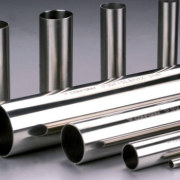302HQ VS 304 Stainless Steel
302HQ stainless steel is a standard material specifically used in the manufacture of self-tapping screws and light mechanical screws. It is also used in bolts, setting screws, rivets, and special fasteners. The name 302HQ is not standardized. The ASTM lists it as UNS S30430, which also includes “XM-7”, “304CU”, and “304HQ”. It has now completely replaced 384 and 305 steel for cold heading purpose. ISO 3506, Standard specification for stainless steel fasteners, 302HQ as an eligible component for class “A2” fasteners; It is commonly used to manufacture fasteners in the A2-70 and A2-80 strength. The stable austenitic structure enables 302HQ to be non-magnetic even after extensive cold working and to maintain excellent toughness at temperatures as low as freezing. Compared with 304 stainless steel, the addition of 3% copper in 302HQ can significantly reduce the cold work hardening rate. The chemical composition and physical properties are shown below:
Equivalent Material
| Grades | UNS No | DIN | EN | JIS |
| 302HQ | S30430 | 1.4567 | X3CrNiCu18-9-4 | SUSXM7 |
Chemical Composition (ASTM A493 S30430)
| Grades | C | Mn | Si | P | S | Cr | Mo | Ni | Cu |
| 302HQ | 0.03 | 2.00 | 1.00 | 0.045 | 0.03 | 17.0-19.0 | / | 8.0-10.0 | 3.0-4.0 |
Mechanical Property
302HQ tensile strength: Annealing: 605, Mild drawing: 660
Density: 7900kg/㎡
Elasticity modulus:193Gpa
Average coefficient of thermal expansion: 0-100℃ (um/m/℃) 17.2; 0-315℃ (um/m/℃); 0-538 ℃ (18.8)
Thermal conductivity: 100℃ (W/ M. K) 16.3; 500℃ (W/ M. K) 21.5
Specific heat: 0-100℃ (J/ kg.K) 500;
Resistance: 720
Corrosion resistance
Its corrosion resistance is equivalent to or superior to 304 stainless steel. Pitting and crevice corrosion is easy to occur in the warm chloride environment, and stress corrosion cracking is sensitive when the temperature is higher than about 50°C. 302HQ can withstand about 200mg/L chloride in drinking water at room temperature and 150mg/L at 60℃.
Heat Resistant Performance
Good oxidation resistance, intermittent use temperature up to 870°C, continuous use temperature up to 925°C. Because of the low carbon content of 302HQ, it is safe for continuous use (no carbide precipitation) ranges from 425 to 860°C.
Heat Treatment
Solution treatment (annealing) is heated to 1010-1120°C and rapidly cooled. Heat treatment will not harden it.
Weldability
Excellent weldability, all standard fusion welding methods (whether or not they contain filler metal) can be used. Use a 308L electrode. Welding is generally not required except in the manufacture of stud welded fasteners, where resistance butt welding is used to join wires together.
Processing
The 302HQ is rarely machined. The grade has a very low sulfur content, which helps its formability but reduces its machinability. The Improved 302HQ (UGIMA 4567) has very high machinability, slightly higher sulfur content, and is also calcium treated for use requiring extensive cold forming and machining operations on the 18/8 steel.
Cold Work Hardening
302HQ is the lowest work hardening rate among the common grades of austenitic stainless steels. According to the wire drawing data, the tensile strength increases by 8MPa when the cold-working area decreases by 1%). Even after extensive cold work, the brand remains essentially unresponsive to magnets. Some high strength cold heading fasteners require a slightly higher work hardening rate, so 304 or 304L (or special grade 304M) should be used instead of 302HQ; The work hardening rate of these grades is about 10-12.5MPa.
Typical Applications
All harsh cold heading applications, including self-tapping screws, roof bolts, mechanical screws, bolts, set screws, blind rivets, etc.



